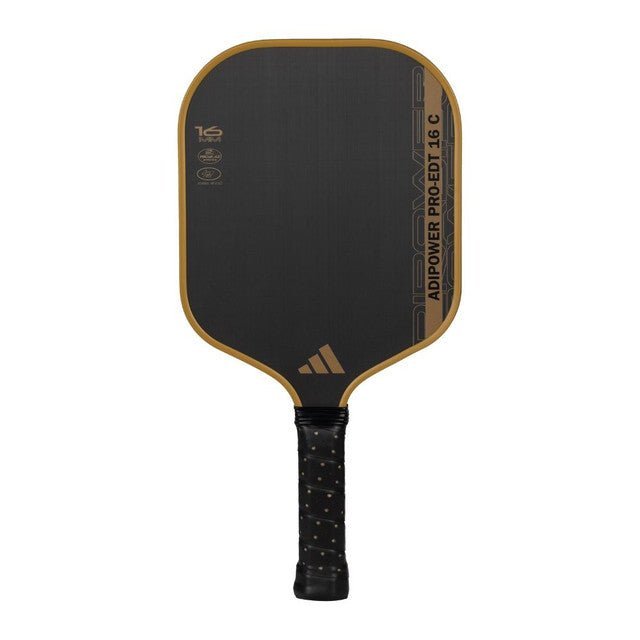
What Is the Best Pickleball Paddle: A Smart Buyer’s Guide
If you are asking what is the best pickleball paddle, you are really asking what is best for your swing, tempo, and goals. There is no single winner. There is a smart way to choose, and it starts with how paddles create control, spin, and power. Keep the question in sight: what is the best pickleball paddle? The right answer lines up with your game today and helps you grow tomorrow.
Start with feel: core, face, and weight
Most quality paddles use a polymer honeycomb core. Thicker cores around 16 mm soften impact and add stability to blocks and resets. Thinner cores around 13 to 14 mm feel livelier and help drive. Face material shapes your touch. Raw carbon grips the ball for spin and consistent dinks. Graphite feels light and crisp.
Fiberglass hits harder and launches the ball fast, which is great for put-aways but less forgiving during soft play. Weight matters more than brand hype. Midweight builds from 8.0 to 8.3 ounces fit most players. Lighter paddles help quick hands in the kitchen. Heavier paddles add plow-through and reduce twist on mishits. If your elbow is fussy, start in the middle, then fine-tune with overgrips or a little lead tape.
Shape, grip, and balance
Elongated shapes add reach on serves and passing shots. Standard shapes feel easier in fast exchanges. Neither is “right” for everyone. Pick the one that matches where you win points. Grip size should match your hand. If you are between sizes, go smaller and add an overgrip. Balance also matters. Headlight paddles flick fast. Head-heavy paddles hit heavy but can tire the wrist. Try both and notice what your body says after thirty minutes.
Quick chooser
● Control and soft game first: 16 mm core, raw carbon face, 8.0 to 8.2 oz, standard shape.
● Power and drives first: 13 to 14 mm core, fiberglass or hybrid face, 8.2 to 8.6 oz, elongated shape.
● All-court balance: 14 to 16 mm core, carbon face, 8.0 to 8.3 oz, slightly elongated.
Test it like you mean it
Do not judge a paddle by five dinks. Run this mini test instead.
● Third-shot drops: ten cross-court. Watch arc and landing depth.
● Blocks: ten hard drives to your body. Note twist and stability.
● Serves: five flat, five kick, five short. Check control range.
● Kitchen speedups: five exchanges. Feel how quickly you reset to neutral.
A keeper makes your misses smaller and your resets calmer.
Budget and value
Under 100 dollars can work for beginners. The sweet spot for reliable build and texture is 120 to 200 dollars. Above that, you are paying for premium layups and longer-lasting spin. If money is tight, buy last year’s model from a reputable brand and spend the savings on proper court shoes. Footing wins more points than any paddle.
Singles vs doubles
Singles rewards reach and heavy contact. An elongated, slightly heavier build shines here. Doubles lives in the kitchen. You want quick hands, clean resets, and grip for spin. A 16 mm core, raw carbon face, and a standard or semi-elongated shape make life easier.
So, what is the best pickleball paddle?
Here is the clean answer. For most improving players, a midweight 16 mm polymer core with a raw carbon face and a grip that truly fits is the safest, smartest bet. It protects your soft game, gives you spin, and stays stable under pressure. If you drive first and love counterpunching, move to a thinner core, a touch more weight, and a livelier face. If you are still wondering what is the best pickleball paddle, write your needs on paper, pick two candidates, run the test above, and keep the one that steadies your game.
Read out article: How to Pick a Pickleball Paddle . Image Credits: Pexels
FAQ
What grip size should I choose?
Measure from the middle of your palm to the tip of your ring finger. Around 4 1/8 to 4 1/4 inches suits smaller hands. Around 4 3/8 to 4 1/2 suits larger hands. If unsure, choose smaller and add an overgrip.
Is a heavier paddle bad for my arm?
Not always. Extra stability can reduce shock because the paddle twists less on off-center hits. Problems start when the paddle is too head-heavy or your form is off. Start midweight and adjust.
Carbon or fiberglass for spin and control?
Raw carbon usually grips the ball better and keeps that texture longer. Fiberglass hits harder but can feel streaky for resets. Choose based on where you win points.